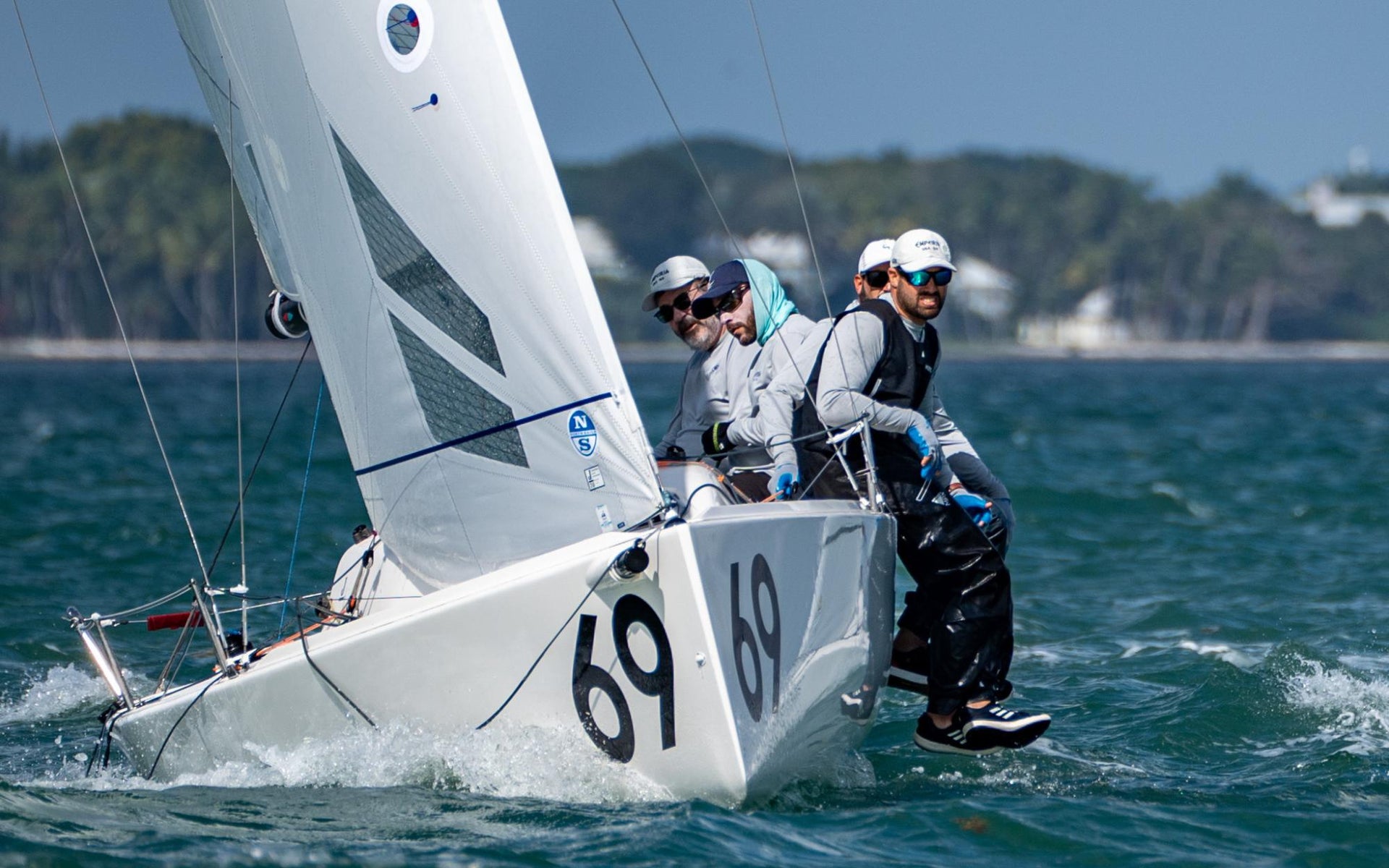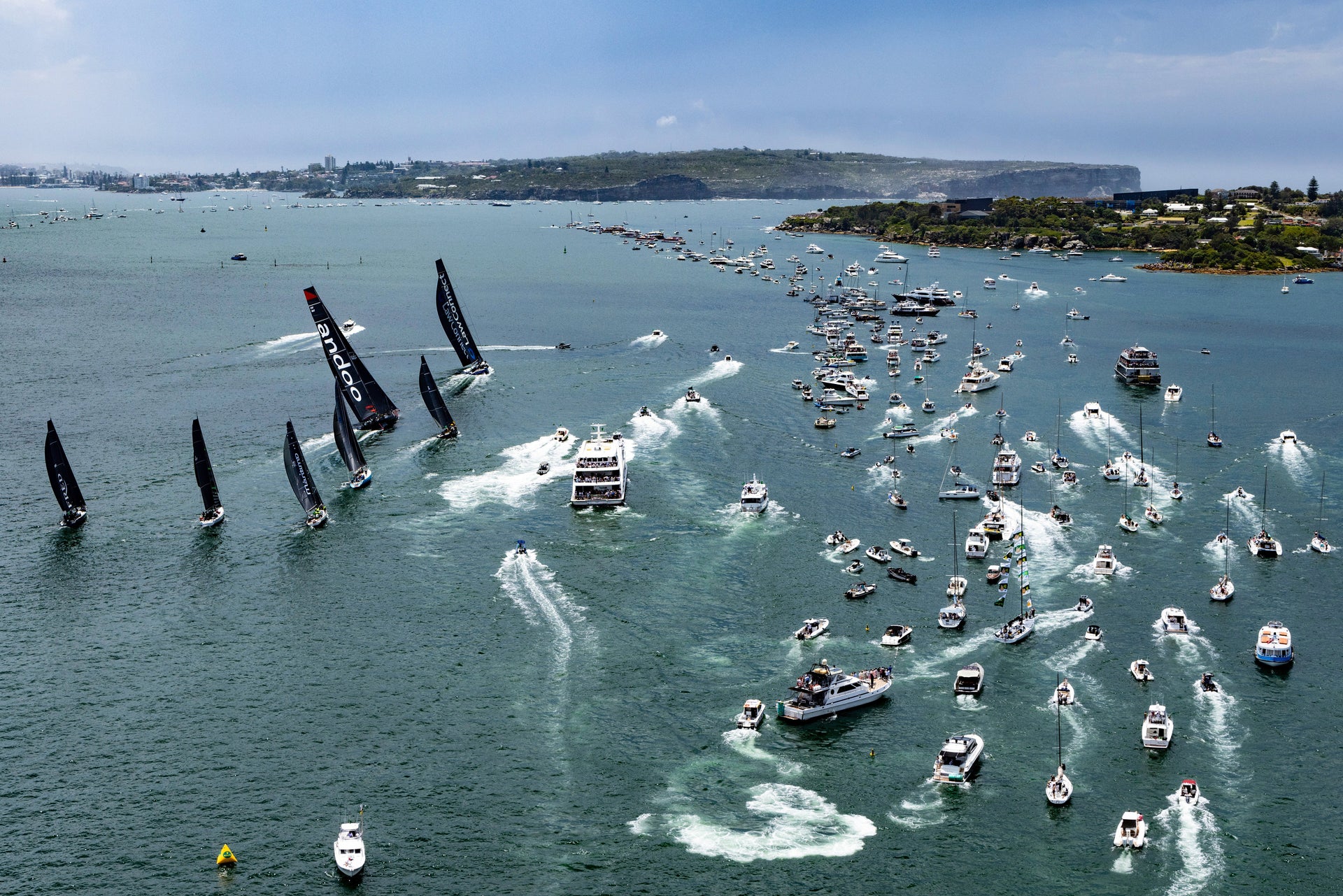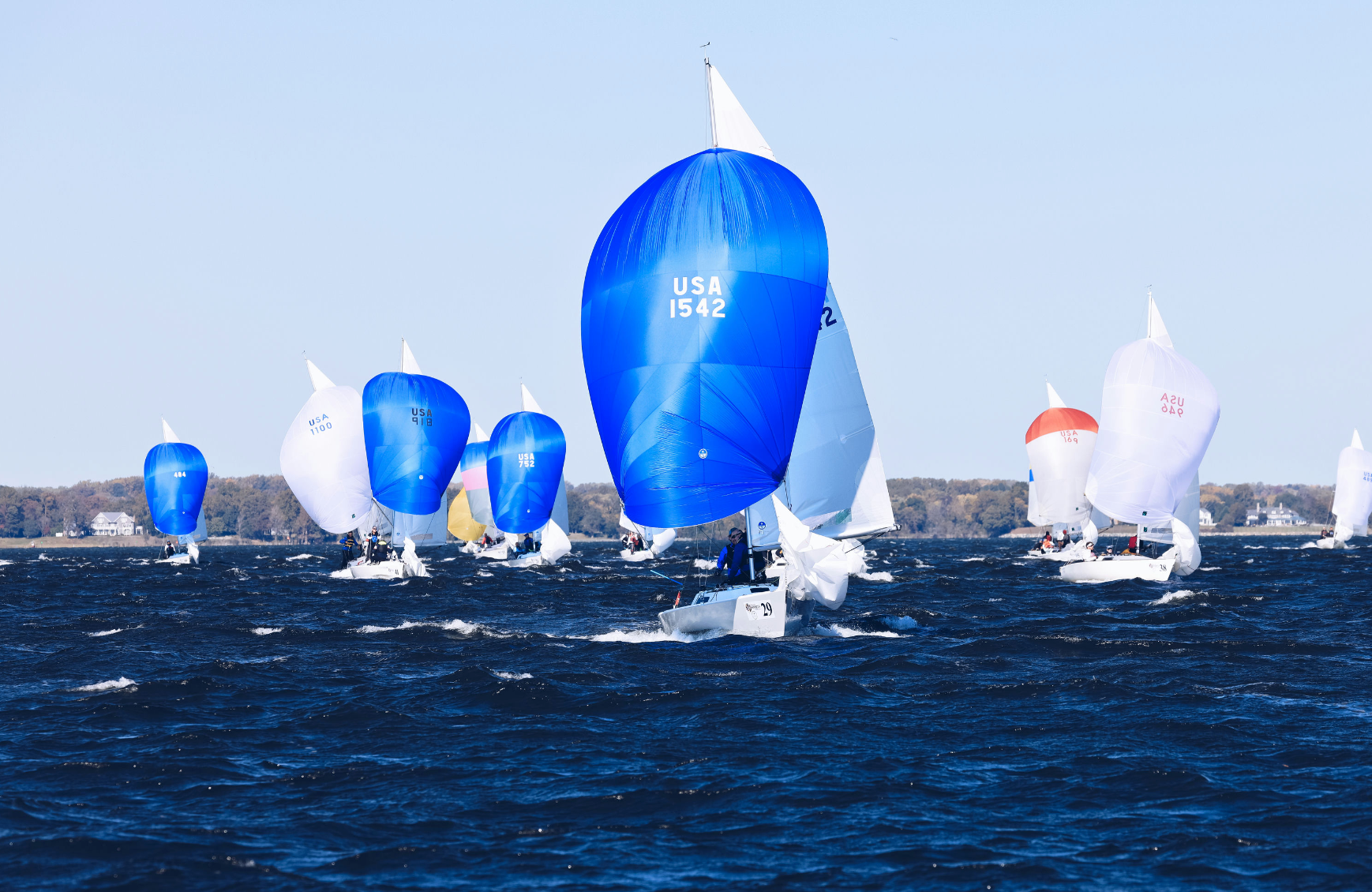J70 UPWIND TIPS FOR BIG BREEZE AND CHOP
J70 UPWIND TIPS FOR BIG WIND AND CHOP
Be Prepared for Your Next Event

North Sails J70 expert Zeke Horowitz reflects on the 2023 Bacardi Invitational Winter Series in Miami, Event 2, and shares his key takeaways after winning the event.
The second event of the Bacardi Invitational Winter Series delivered the best sailing conditions a fleet of J70s could ask for. Friday had a glorious Northerly, which delivered shifty and puffy winds that challenged the fleet to find the right mode. Saturday brought a full breeze-on day with gusts into the low 20-knot range, allowing the fleet to enjoy a bunch of blast reaching around beautiful Biscayne Bay. And Sunday brought a delightful 10-15 knot easterly, providing ideal conditions for the fleet to duke it out for the final standings.
Winning this event onboard John Heaton’s Team Empeiria was no easy feat. The immense talent throughout the 26-boat fleet made for super tight mark roundings and photo finishes. There was never an inch to spare around the race course, so finding consistent top-end speed was the name of the game. Our speed and conservative tactics allowed us to lay down a consistent scoreline with no major mishaps. We worked very hard to shift gears upwind through the major changes in velocity and ferocious chop.
Below are some of our key takeaways that will help you beat the chop and big breeze at your next event.

It’s all About the Heel
Because the J70 has such a “deadstick” feel on the helm, it’s very easy to want to sail the boat with a lot of leeward heel. The heel gives the helmsperson a bit of tug on the tiller which makes the boat feel loaded and good. But this creates drag on the rudder and also decreases laminar flow on the keel resulting in less speed and less height; essentially the boat will slip to leeward when it heels. In aggressive chop, the desire to heel becomes even more extreme, but time and again we found that even in terrible chop with the boat slamming through wave after wave, it is better to try to sail the boat flat. The boat may slam a little harder, but you’ll find that your boat speed comes back on quicker and without a sacrifice in height if you’re patient and drive through it.
It is quite difficult to sail the boat with less than 20 degrees of heel when the wind is in the upper teens or low twenties but there is a huge cliff when the boat heels past that 20 degree point. We set a goal of sailing at 14-17 degrees of heel in the big breeze and chop. We set mental and verbal alarms for any time the boat heeled over 20 degrees. It takes the right rig tune, sail trim and steering technique to keep the boat going in this narrow groove and it requires a lot of teamwork.
The jib trimmer needs to be playing the in-hauler (banjo style) on the weather rail so it can be dumped in big puffs and pulled back on through big lulls. The main trimmer needs to be going through a range of backstay and mainsheet with the boom vang just taught (easing sheet and tightening backstay in the big puffs, easing backstay and tightening mainsheet in the lulls). Make sure your backstay is in a range where you can “invert” the main with a diagonal wrinkle out of the clew in the biggest puffs and then ease the backstay to erase that wrinkle in the lulls. The bow person must be extremely accurate with both their puff and lull calls. However, the hardest job is that of the helmsperson. They need to keep sharp focus on the tell tales, waves, speed target and heel target so they can keep the boat in a narrow groove. If the boat is approaching 20 degrees of heel, they need to be delicately feathering up to take some heel out even if they are about to be smacked by a set of steep chop.
It’s a hard skill to develop, but focusing on the speed and heel target will give some peace of mind when it feels terrible. The trimmers should try to communicate when they’ve reached the extreme end of their range so the driver knows the trimmers can no longer save the heel angle. Saying something like, “main’s out, max heel” to the driver will let them know that it’s all on them now to feather up to keep the boat flat. We often joke that if it feels good, you’re probably doing it wrong. Learn to feel good sailing flat and chopping wood. I recommend a digital heel angle display and a paddle wheel speed read out for the most accurate information.

Weight Back
The J70 loves to have weight forward in most conditions. But adjusting the weight aft as the breeze and chop comes up is imperative to let the boat sit on its lines as it smashes through waves. The more you slide the weight back, the less slamming you will do but it will also help you sail a bit lower on average without over-heeling. (Weight forward tells the boat to point and weight aft tells the boat to foot). A “normal” hiking position is to have the bow person just a couple inches aft of the stanchion near the shrouds, the jib trimmer pressed right up against them, the main trimmer sitting just forward of the winch and the helmsperson just aft of the traveler cleat. But in the extremely choppy conditions, as we saw in Miami, it was critical to get the weight back such that the main trimmer was either straddling the winch or just behind it with the jib trimmer just in front of the winch and the bow person even with the jib sheet cleats. The helmsperson only slides back a couple of inches so they are still comfortable and accurate with steering. Should you find a bit of flat water, try to push forward a few inches and then call for weight back when a big set of waves is coming. Keeping the crew weight together is very important as well and when you combine this fore/aft movement with the trimming and steering technique described above, it allows the boat to sail flat while sailing low enough to power through the waves.
Don’t Let the Main “Blow Up”
In the windiest stuff we saw, there were times that the main trimmer would have to let the main sail completely luff in order to keep the boat from over-heeling however this is not ideal. If the main is eased so much that it’s flapping, that creates drag and slows the boat. Even when you’re overpowered, you want to be able to keep the main engaged so that the boat is balanced and easy to steer straight. Making the main flat is the first step which starts by having enough rig tension. Your uppers and lowers should both read about 31 or 32 on the Loos Gauge at your tightest setting. Next, you must have enough backstay gross-tune on so that you can still invert the main (overbend wrinkles) with the backstay control line. Lastly, make sure you’re not shy about using the cunningham. This takes those overbend wrinkles away, essentially allowing you to pull even more backstay on to flatten out the main. But a great jib trimmer knows that they actually control a lot of this issue. If the jib is too full or sheeted too hard, it will cause the air to flow to windward as it exits the leech of the jib and spill into the leeward side of the main making it luff. So if you’re noticing that the main is blowing up multiple times per beat, you need to try to flatten out the jib by either easing the inhaul, pulling the jib leads back, or easing the primary sheet. Also be sure there is enough jib halyard on that the luff is smooth with no horizontal wrinkles coming back off the luff. There should be an alarm that goes off in the jib trimmer’s head any time they hear the main blowing up. Of course at some point when it gets windy enough, the main just has to rag to keep the boat upright but this should be once it’s blowing over 25 knots or so. The further your team can go up the wind range without blowing up the main, the faster you’ll be.
Mastering the J70 in steep chop and big breeze is about as hard as it gets; however learning to feel good when it feels bad will make it a whole lot easier. For more in depth information, the latest tuning guide or for any specific questions, don’t hesitate to reach out to your North Sails J70 class experts.
Contact your North Sails J70 North American Experts here:
ZEKE HOROWITZ ALLAN TERHUNE ALEX CURTISS



























